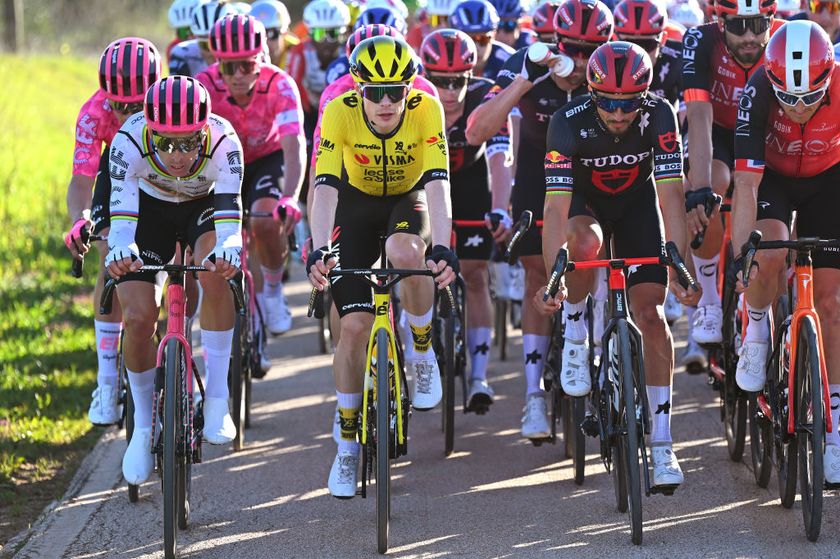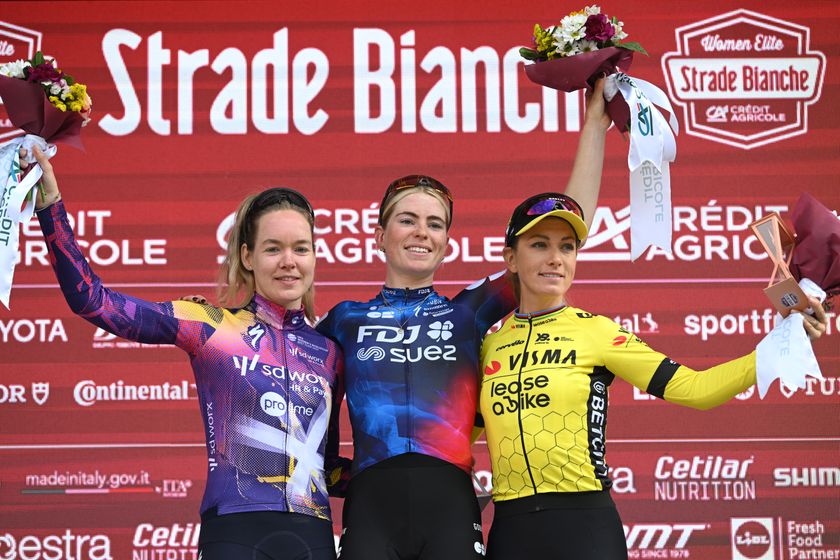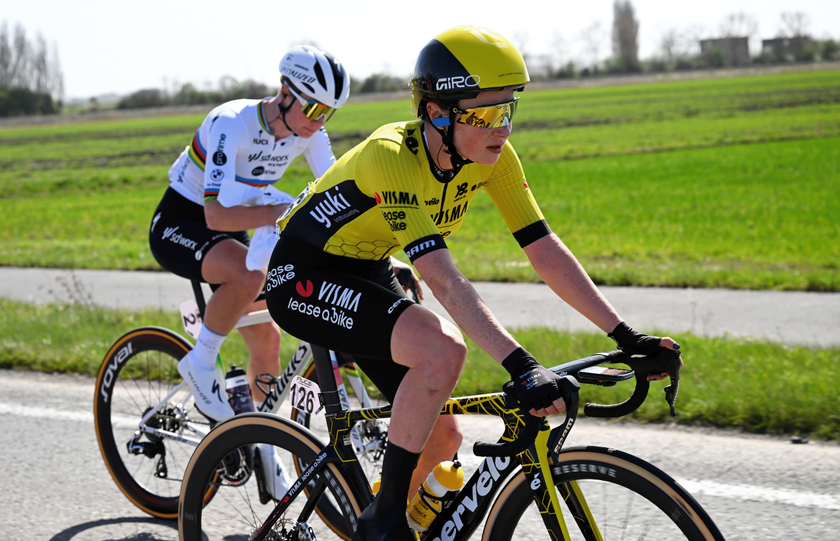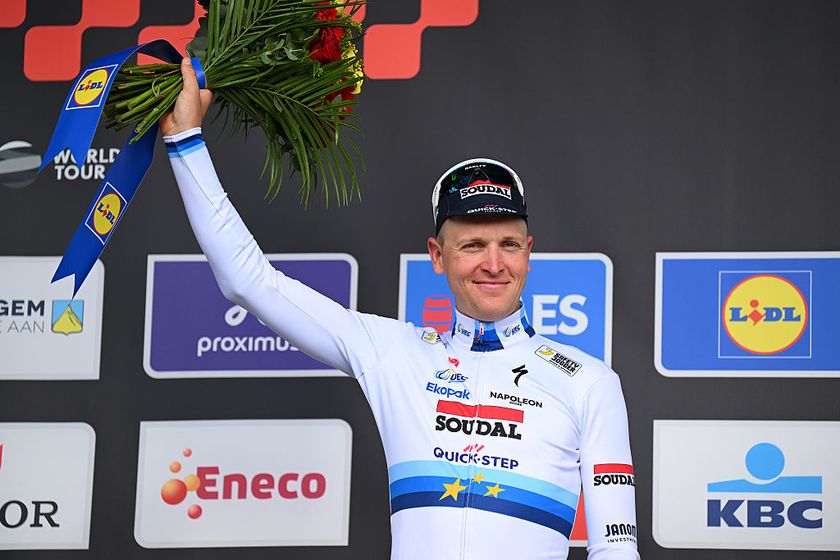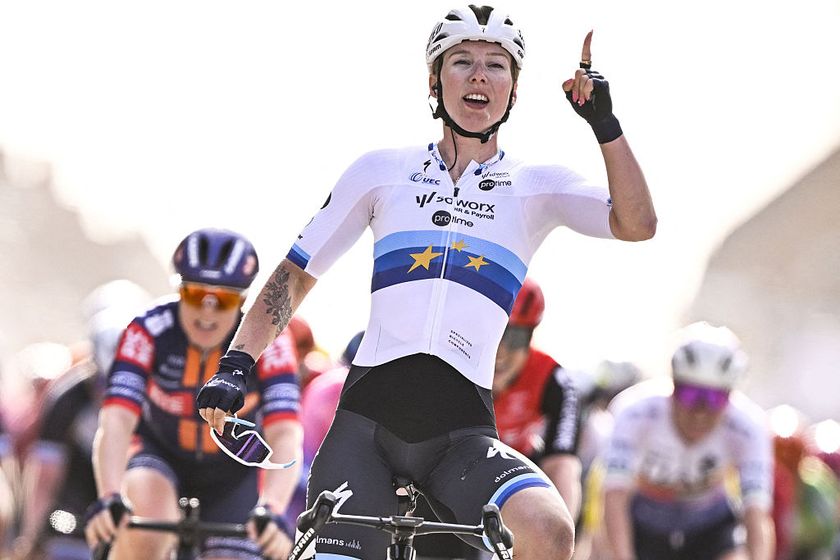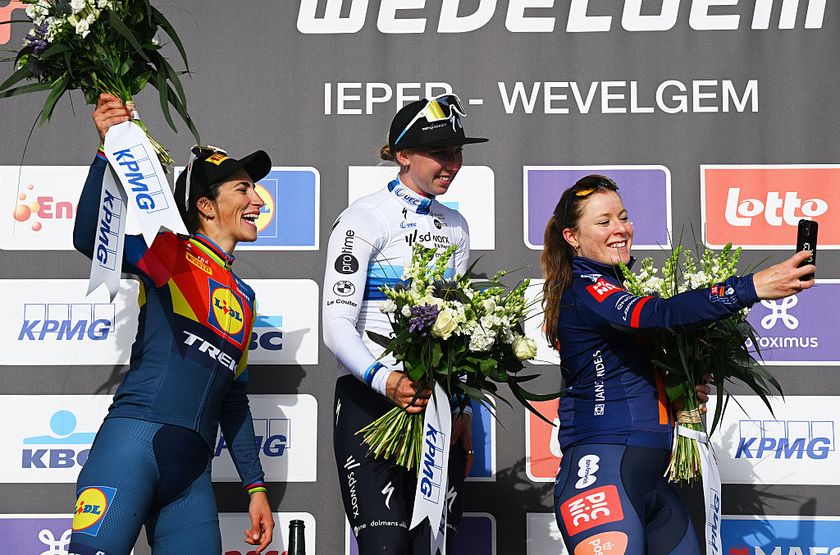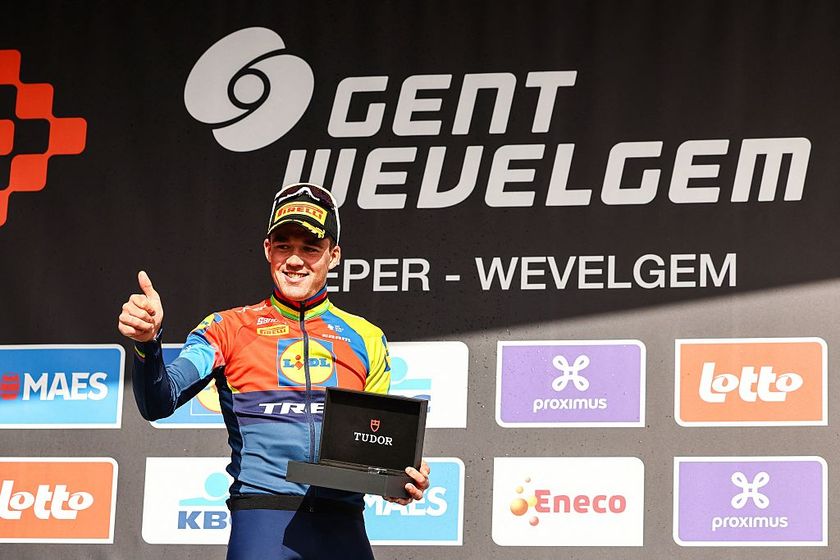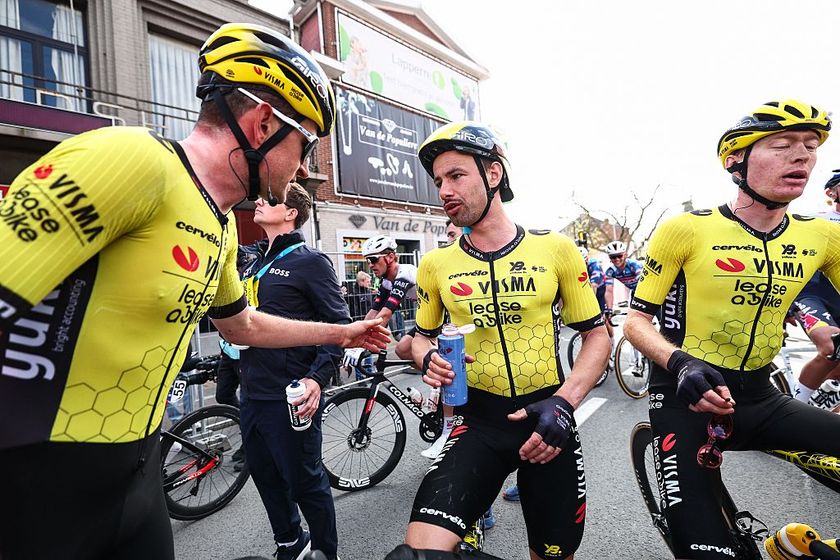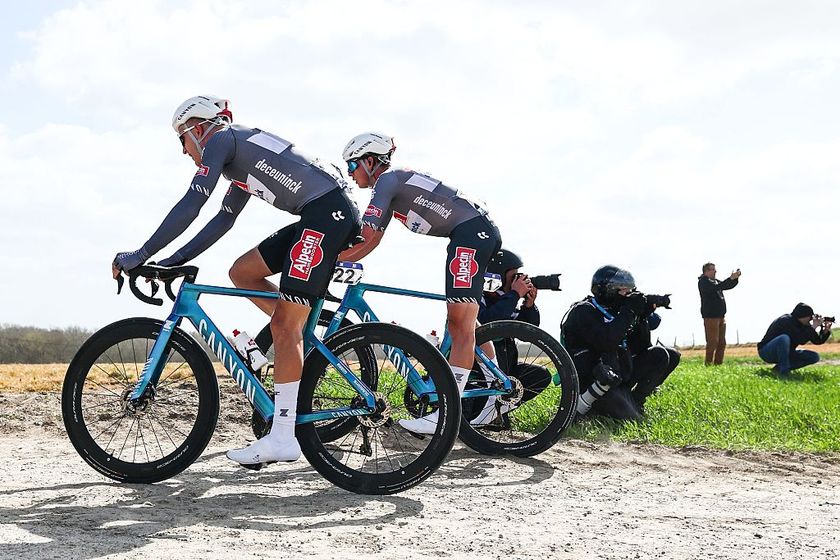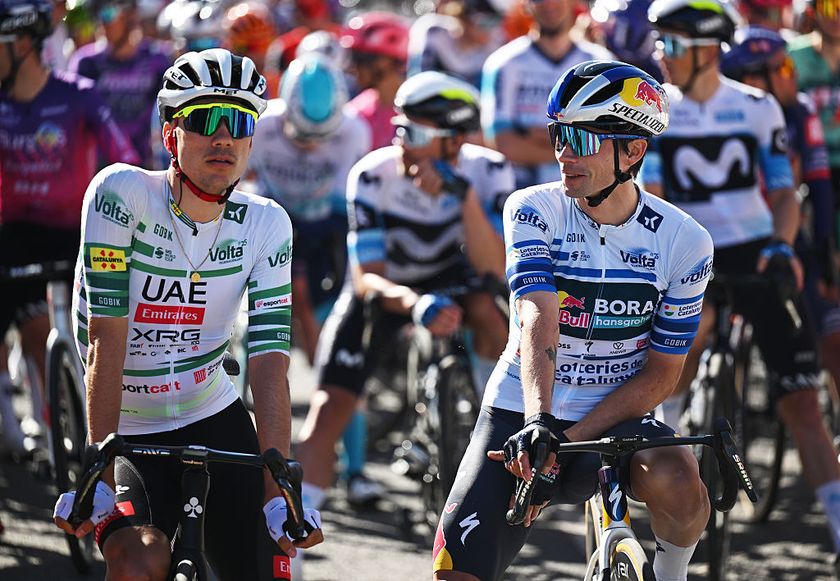Froome's six-year battle for Vuelta hits crunch time in Angliru
2017 Vuelta's final mountaintop finish to decide the overall winner







Chris Froome's six year pursuit of the Vuelta a España title culminates with how he performs on the race's ascent of the Angliru today, with the Team Sky rider ahead on the overall but with a narrow lead and very little room for error or weakness.
Rated as Spain's most difficult climb and one of the hardest in Europe, for Froome the 12.5 kilometre ascent of the Angliru could mark the point where he definitively joins Bernard Hinault and Jacques Anquetil as the only rider to win the Tour and Vuelta in the same year.
For Vincenzo Nibali (Bahrain-Merida), Froome's biggest rivals, 1:37 back and second overall, dislodging Froome would allow him to take his fifth Grand Tour win and his first Vuelta since 2010. It would also, given Froome has held the lead since stage three, constitute a massive last-minute upset, but that is hardly unusual in the Vuelta : just ask Tom Dumoulin after his loss of the red leader's jersey on 2015's penultimate stage to Fabio Aru.
The ninth and last summit finish of the 2017 Vuelta marks the seventh ascent of the Angliru since 1999.
Today it is preceded by two first category climbs: the Cobertoria and the Cordal. Neither is excessively difficult and on such a short stage, just 117 kilometres long, the biggest challenge will probably come on their descents, both of which are technical.
The Cordal, in particular, has the reputation of being like a skating rink in wet weather, to the point where it once caused a change of leader in the Vuelta. In 1999 Abraham Olano, a good descender, skidded and fell and cracked a rib there and although he hung on to first place overall on the Angliru, Olano finally ended up ceding the top spot overall to Jan Ullrich because of his injury.
Almost immediately after the very fast descent off the Cordal, the race reaches the mining village of La Riosa, and moves onto the lower slopes of the Angliru. Last tackled in 2013, Nibali, like Froome, has unfinished business with the Spanish climb: he lost the race there four years ago to Chris Horner, partly because the dry weather allowed Horner to use his out-of-the-saddle climbing technique, rather than being forced to stay seated, as happens on such a relentlessly steep ascent when the climb is wet. Ironically enough, as soon as the stage was over four years , the heavens opened and began to tip down.
Get The Leadout Newsletter
The latest race content, interviews, features, reviews and expert buying guides, direct to your inbox!
Come rain or shine, local media say around 150,000 fans are expected on the climb - where it is overcast and forecast to rain.
The narrow, single-track road, used originally for herding cattle, has been resurfaced, but there have been no other changes. And barring some spectacular views of the mountains of northern Asturias, there are still no buildings at the top: this is cycling's ultimate road to nowhere - barring victory in the Vuelta, that is.
The first 5.5 kilometres are not so hard, but from that point onwards, on ramps known as the Viapará, the road rears upwards more much steeply, and the average gradient shifts to a painful 10 percent. On such steep slopes it becomes impossible to rely on a 'train' of support riders; rather the stage mutates from being a normal race into the toughest of uphill individual time trials - which is what makes the Angliru so special, rightly or wrongly, as a test of climbing strength.
The Cuesta les Cabanes ramp, at 21.5 percent, comes at around km 7 of the 12.5km total. There is a brief respite of sorts at km 8.5, where the ramps percentage points drop to a mere 14.5 percent and then as the race swings right for another kilometre long straightaway, we're back up to a much harsher 20 percent.
However, the curve that really leaves a lasting impression is the next big left-hander known as Cobayos, at km 10. Just 2.5 kilometres are left to go, but Cobayos 19 percent gradients lead directly onto the 1.3 kilometres long segment called Cueña les Cabres (the goats track). By far the hardest part of the climb and with an average of 18 percent, this is where the massed lines of fans are thickest, where car clutches burn out, riders suddenly reach the end of their strength - and the Vuelta may well be won or lost.
The last part of the climb maintains the pain, with the final hard segment of El Aviru which has slopes of 21 percent with 1.5 kilometres to go, very likely to extend any gains made by an attack on the Cabres 'ramp'. Finally, after a short descent and quick kick back up in the final kilometre to the Picu del Puerto finish, the ascent is over: 1266m metres of vertical climbing in 12.5km to 1573 metres above sea level.
Only twice in the last six ascents, in 2008 and in 2011, has the Vuelta's stage winner also gone on to win the Vuelta outright. It has seen the race leader change three times: in 2002, Roberto Heras, the winner replaced Oscar Sevilla atop of the GC, in 2008 Alberto Contador ousted Egoi Martinez and in 2011, Cobo supplanted Team Sky's Bradley Wiggins.
The biggest difference between a stage winner and their closest pursuer, though, dates from 2002, when Gilberto Simoni crossed the line 2 minutes and 19 seconds ahead of Jan Hruska. Curiously enough, in 1999, when the race first tackled the Angliru, the effect it had on the overall was minimal. The late Jose Maria Jimenez managed to take an impressive stage win in the fog ahead of Pavel Tonkov, but Olano managed to remain as race leader.
On the last ascent of the Angliru in 2013, Kenny Elissonde, now with Team Sky (but not at this year's race) was the stage winner, where Horner, the overall winner took second. The American finished 28 seconds ahead of Vincenzo Nibali, who finished fourth, the only rider from that year's top ten to be present again.
Chris Froome can count on support from Wout Poels, second on the Angliru in 2011- racing for Vacansoleil and two spots ahead of the Briton.
"That day [former Sky rider Bradley] Wiggins had the jersey there and lost it, so I know that climb well, and hopefully we will be able to do a little bit better," he told Cyclingnews.
For Froome and Team Sky, there is no other goal. It's crunch time at the 2017 Vuelta a Espana.
Alasdair Fotheringham has been reporting on cycling since 1991. He has covered every Tour de France since 1992 bar one, as well as numerous other bike races of all shapes and sizes, ranging from the Olympic Games in 2008 to the now sadly defunct Subida a Urkiola hill climb in Spain. As well as working for Cyclingnews, he has also written for The Independent, The Guardian, ProCycling, The Express and Reuters.
